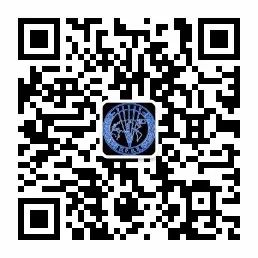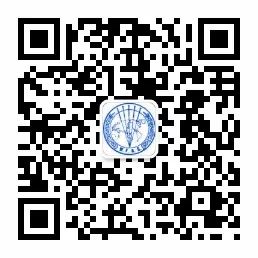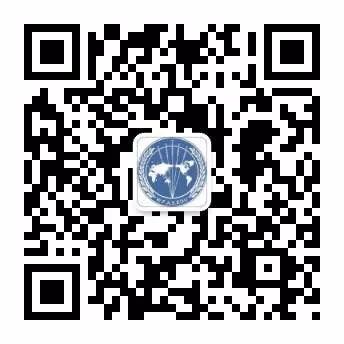Chen Zifu, a native of Tangshan, Hebei, was born in October 1935. He entered Beijing University of Traditional Chinese Medicine in 1956. After graduating in 1962, he was assigned to work at the Tonghua Mining Bureau in Gulin Province. In 1979, he transferred to the Tangshan Traditional Chinese Medicine Hospital, and in 1982, he returned to Beijing. Over more than twenty years of clinical teaching, he has conducted extensive research on meridians and acupoints, authored “Lectures on Meridian Theory” and “Teaching Reference Materials on Meridian Theory” (unpublished), and published more than ten papers. He has served as the director of the Meridian Research Office in the Acupuncture and Tuina Department of Beijing University of Traditional Chinese Medicine, an associate professor, and a council member of the Beijing Acupuncture Society.
1. Academic Characteristics and Medical Expertise
1. Advocating Meridian Palpation
The method of palpating the meridians has been recorded since the “Neijing” (Inner Canon). There are more than ten methods such as inspection, palpation, following, pressing, tapping, pushing, grasping, pulling, and communicating. The responses during palpation can include temperature variations (warm or cool), smoothness, dryness, thickness, fineness, hardness, and softness at the wrist area.
There are three types of responses in the meridians: first, sensations of soreness, numbness, pain, distension, woodiness, heaviness, hardness, tightness, warmth, coolness, blood stasis, swelling, and sinking; second, responses resembling tendons, cords, knots, beads, millet, small hammers, and horizontal wood; third, sensations of qi movement like a crossbow (electric shock-like), like ants moving, peristalsis, flowing water, qi rushing, heat flow, and cool flow. As stated in the “Lingshu: True Evil of Needling,” “Those who use needles must first observe the reality and deficiency of the meridians, palpate and follow them, press and tap them, observe their responses, and then select the appropriate points to treat.”
Therefore, palpating the meridians is an essential method for acupuncturists to diagnose diseases and select acupoints. Chen has extensive experience in this area. For example, he treated a 38-year-old male miner who had sudden severe pain in his upper front teeth three months prior, which was relentless. He had sought treatment from local doctors, but common analgesics were ineffective, and morphine only provided temporary relief. The pain was exacerbated by cold air, hot drinks, cold food, and light touch, especially at night. After three days of insomnia and no food intake, he sought treatment from Chen in early February 1966. Upon examination, the color and shape of the teeth were unchanged, the gums were not swollen, and the tongue had a thin yellow greasy coating. Chen selected the acupoints of Xiaguan (下关) and Hegu (合谷) for a draining technique, and the pain ceased almost immediately, allowing the patient to sleep. However, after half an hour of needle retention, the pain returned severely, causing agitation. Chen, feeling helpless, palpated the hand and foot Yangming meridians and found no response. After some contemplation, he instructed the patient to lie face down and palpated the back shu points, discovering that both sides of the jueyin (厥阴) point were painful like a needle prick; he then needled the Ah Shi point (阿是穴) using the sparrow pecking technique, which resulted in a sensation of blood flowing into the teeth, and the pain stopped, allowing the patient to sleep peacefully. After one hour of needle retention, the pain did not return. Chen pondered the mystery of the jueyin point causing tooth pain and learned that the patient was under stress preparing for the upcoming Spring Festival, which contributed to the pain. Chen realized that this was due to the heart governing the spirit and acting on its orders. Another case involved a 30-year-old female patient with long-standing epigastric pain. Each episode was relieved by oral or injected antispasmodics but recurred. A barium swallow diagnosed her with “gastric spasm.” The patient was robust but irritable, and her stomach pain would flare with emotional changes. On the night of her visit, she experienced severe epigastric pain, moaning continuously, with a pale red tongue and thin coating, and a wiry, slightly rapid pulse, diagnosed as liver qi stagnation with spleen deficiency leading to accumulation of Yangming meridian qi, causing pain. Chen selected the foot jueyin (足厥阴) and foot Yangming (足阳明) meridians for palpation, adhering to the principle of “treating the internal organs together,” and palpated the corresponding yin and yang acupoints. He found that Tai Chong (太冲) felt like a knot, Zu San Li (足三里) felt like a sinking point, and Yang Ling Quan (阳陵泉) also felt like a sinking point. Upon palpating the back shu points, there was no response in the liver, spleen, or stomach points, but the diaphragm point had a response that felt like a tendon, causing pain upon needling. Chen theorized that blood was accumulating at the diaphragm point, possibly due to prolonged pain affecting the stomach’s network, and upon further inquiry, the patient indicated the most severe pain was below the xiphoid process, suggesting that the pain had reached the diaphragm, causing qi counterflow and nausea. He then dispersed the jueyin and opened the Yangming to guide the counterflow downwards, first needling the four gates and then needling the diaphragm point, which alleviated the pain. He subsequently needled Yang Ling Quan and Zu San Li to maintain the effect. After one minute of needle retention, the pain disappeared, and she did not experience a recurrence that summer or autumn.
2. Proficient in Using Through-Needling to Expel Wind and Alleviate Obstruction
Chen believes that the principle of “drawing yin from yang and yang from yin” is essential for acupuncturists in differentiating and selecting acupoints. However, if one needle can access two acupoints, with one acupoint penetrating two meridians, both yin and yang are obtained, and the meridian qi communicates, leading to rapid effects. For example, a patient named Xue, a 68-year-old retired worker, reported that after drinking alcohol the previous night, he woke up to find his left side paralyzed and was urgently sent to the hospital’s acupuncture department. The patient was elderly, tall, and healthy-looking, with a rosy complexion and well-developed muscles, clear consciousness, and fluent speech. The left corner of his mouth was slightly drooping to the right, the nasolabial fold was shallow, and he could not close his left eye, with the left forehead wrinkles absent. His left upper and lower limbs were weak and flaccid. The tongue was pale red with little coating, and the pulse was deep, wiry, and strong. This condition was diagnosed as a stroke. Although the patient appeared robust, his kidney qi was declining, and yang qi was deficient, making it difficult for blood to circulate, leading to blood stasis in the meridians. The treatment should focus on tonifying qi, promoting blood circulation, warming the meridians, and expelling wind. Acupuncture was applied to Bai Hui (百会), Qi Hai (气海), and Guan Yuan (关元); needling Xue Hai (血海) (bilateral) and Zu San Li (足三里) (bilateral); facial points included Yang Bai (阳白) through Yu Yao (鱼腰), Si Bai (四白) through Ying Xiang (迎香), and Jia Che (颊车) through Di Cang (地仓); upper limbs included Jian Yu (肩髃) through Bi Nao (臂臑), Qu Chi (曲池) through Shao Hai (少海), Wai Guan (外关) through Nei Guan (内关), and He Gu (合谷) through Hou Xi (后溪); lower limbs included Huan Tiao (环跳) through Chang Qiang (长强), Feng Shi (风市) through Yin Men (殷门), Yang Ling Quan (阳陵泉) through Yin Ling Quan (阴陵泉), Xuan Zhong (悬钟) through San Yin Jiao (三阴交), and Kun Lun (昆仑) through Tai Xi (太溪). One day of acupuncture treatment, and after a month, he was able to walk and take care of himself.
3. Advocating Meridian Timing
Chen has grasped the essence of the Dan Yutang (单玉堂) flow-needle technique and, under its guidance, summarized it into the manuscript “Zi Wu Liu Zhu Xun Gu.” After more than twenty years of in-depth research on this classical acupuncture technique, Chen has summarized the “Three Essential Principles of Dan’s Flowing Needle Technique”:
(1) Carefully assess the disease and correspond with the timing: The Zi Wu Liu Zhu needle technique has two methods of selecting acupoints: one is the conventional method based on time; the other is the clinical differentiation method. The conventional method involves calculating the time and using the Jia method to determine the acupoints according to the “Xu’s Zi Wu Liu Zhu Acupoint Selection Method.” However, simply using the conventional method cannot treat all diseases. Therefore, it is essential to “carefully assess the disease and correspond with the timing,” meaning that differentiation must be combined with the timing of acupoint selection. “Carefully assess” has two meanings: one is to be cautious and meticulous, meaning that differentiation must be accurate and careful; the other is to adhere strictly to the principles of differentiation to examine and measure the disease’s condition. The method of “corresponding with the timing” has two aspects: one is to “carefully wait for the right time, when the qi can be expected,” meaning that after differentiation, one waits for the appropriate timing acupoint to open for treatment; the other is to select the appropriate timing acupoint based on the original acupoint selection after differentiation. Therefore, the Zi Wu Liu Zhu needle treatment does not contradict the principles of differentiation and treatment but is very flexible in selecting timing acupoints based on differentiation.
The Jia method, also known as the Gan method, can be used in clinical differentiation to select timing acupoints based on the disease’s condition. After differentiating the meridians, one can follow the rules of acupoint selection, opening yang acupoints during yang days and times, and yin acupoints during yin days and times; acupoints are selected according to the meridian’s nature. The five transport acupoints of the meridian corresponding to the day can be opened in sequence, which is called the method of selecting acupoints in accordance with the timing of the meridian. Additionally, according to the rules of the five movements, the combinations of Jia and Ji, Yi and Geng, Bing and Xin, Ding and Ren, and Wu and Gui can be used to select acupoints that harmonize yin and yang, achieving a balance of qi and blood, which is called the method of selecting acupoints that harmonize rigidity and softness. Furthermore, one can select acupoints based on the relationships between the organs, such as the lung corresponding to the large intestine, the heart to the small intestine, the spleen to the stomach, the liver to the gallbladder, the kidney to the bladder, and the pericardium to the sanjiao, selecting the same five transport acupoints of the corresponding meridians. For example, during the Jia Xu day and Jia Xu time, one can select the Gallbladder Jing (胆井) acupoint, which belongs to the metal acupoint; if there is a spleen dysfunction, one can also select the Spleen Jing (脾经) acupoint Shang Qiu (商丘), achieving the effect of harmonizing yin and yang and balancing qi and blood.
(2) Opening acupoints during closed times, in accordance with the heavenly measure: In the “Zi Wu Liu Zhu Circular Diagram,” there are twelve time periods in a week when no acupoints can be opened; in another week, there are also twelve time periods when no acupoints can be opened, referred to as closed times. Historically, practitioners of the Zi Wu Liu Zhu acupuncture have referred to this as a “natural defect.” Later generations have used various methods to open these closed times to seek acupoints, but these methods are often not effective and somewhat forced. Dan’s method follows the heavenly measure, creating the “142530” method for opening acupoints during closed times, appropriately supplementing the twenty-four closed time acupoints, marking that the flow of qi and blood in the human body has no end. Chen follows his teacher’s teachings, stating that according to the “Suwen: Six Qi and Organ Images,” “Heaven has six sixes as a measure, there are ten days in heaven, and after six days, the Jia returns, and after six Jia, the year ends, which is the method of three hundred sixty days.” Excluding the sixty combinations of the heavenly stems and earthly branches, seeking the Jia day, the short and mutual overcoming is the source of pre-heaven, and the mutual generation is the source of post-heaven. However, upon careful examination of the “Zi Wu Liu Zhu Circular Diagram,” the sequence of “142530” does not follow the heavenly measure but rather goes against it. If one follows the principle of “starting from Jia and determining the movement,” in accordance with the heavenly measure, it should start from Jia Zi, and the sequence of Jia days should be “410352.” However, the timing acupoints opened during closed times are the same as those of “142530.” If one further investigates its roots, the sequence of “142530” should be the sequence of the intersection of yin and yang, but this sequence has a “Xun Kong” (旬空) in it, which causes the loss of acupoints, as it encounters Gui, which arises at the Hai time. Thus, Dan has completed the opening of acupoints during closed times on the “Zi Wu Liu Zhu Circular Diagram.”
(3) Supplementing and draining as needed: The principles of following and supplementing are the essence of the Zi Wu Liu Zhu technique. This is essentially the transmission of the principles of the “Neijing,” where following and supplementing are based on the direction of the flow of qi and blood in the meridians; following means to drain, and supplementing means to assist. The specific techniques include twisting, lifting, inserting, breathing, and varying speeds. The ancient methods divided techniques by gender and sides, but this is less common today. Some determine following and supplementing based on the direction of the needle tip, while others determine it based on the direction of the thumb of the hand holding the needle, but it is essential to distinguish between yin and yang meridians.
The eight extraordinary meridians have a wide range of clinical applications, as recorded in the book “Guidelines for Acupuncture Classics.” Therefore, when encountering diseases, one can first open the timing acupoints of the eight methods (referring to the Ling Gui) and then, based on the disease’s needs (differentiation), open the acupoints used in the Jia method. For example, on the Jia Xu day at the Jia Xu time, one can first open the eight methods Hou Xi (后溪) and Shen Mai (申脉) to treat symptoms such as floating pulse, wheezing, chills, and abdominal pain, and if there is fullness under the heart, one can also use the hand Taiyin Jing (手太阴井) Shao Shang (少商) and foot Taiyin Jing (足太阴井) Yin Bai (隐白); if there is a fever, one can use the hand and foot Taiyin Shu (手足太阴之输穴) Tai Yuan (太渊) and Tai Bai (太白); if there are wheezing and chills, one can use the hand and foot Taiyin Jing (手足太阴之经穴) Jing Qu (经渠) and Shang Qiu (商丘); if there is counterflow qi and diarrhea, one can use the hand and foot Taiyin He (手足太阴之合穴) Chi Ze (尺泽) and Yin Ling Quan (阴陵泉). In addition, if there are original acupoint symptoms, one can use the original acupoints; if there are collateral acupoint symptoms, one can use the collateral acupoints; if there are symptoms that correspond to the mutual use of acupoints, one can use the mutual use acupoints, etc. The methods are flexible, and the key lies in the accurate differentiation of the meridians.
2. Selected Medical Cases
Case 1: Facial Muscle Spasm
Wang X, male, 54 years old, a miner, first diagnosed in early July 1970.
The patient had left-sided facial muscle spasms for over ten years, with facial twitching, the left eye opening and closing intermittently, and the left corner of the mouth moving up and down. The patient was thin and weak, having sought various treatments without success, and thus turned to acupuncture. The diagnosis was internal wind movement due to deficiency, ascending to the face.
Prescription: Right Hegu (合谷), Jia Che (颊车), Si Bai (四白), Yang Bai (阳白), and Yi Feng (翳风).
Treatment process: Using the large needle technique, treatment continued for three months without effect. Chen palpated the hand and foot Yangming meridians and found a response of soreness at the left arm’s San Li (手三里); he also palpated the Shao Yang and Tai Yang meridians, finding no response below the elbow. He then palpated the back shu points, finding no response, but at Tian Zong (天宗), there was a response that felt like a knot and was sore. He then needled the above two responsive points, adding the same side’s Hegu and Wai Guan (外关). After two months of treatment, the episodes gradually lessened and eventually resolved.
Case 2: Migraine
Guo XX, female, 43 years old, an office worker, first diagnosed in early October 1965.
She reported that two years ago, after a disagreement with a family member, she developed left-sided migraines that gradually worsened. After two months of ineffective painkillers, she took a leave of absence. For nearly two years, each episode was so painful that she felt like she was dying. Upon examination, her complexion was slightly dark, with cupping marks on her forehead, a thin yellow tongue coating, a red tip, and a slightly rapid wiry pulse, diagnosed as long-standing liver qi stagnation transforming into fire and attacking the Shao Yang. The treatment aimed to drain the liver, benefit the gallbladder, regulate qi, and relieve pain.
Prescription: Tai Chong (太冲), Zu Lin Qi (足临泣), Yang Bai (阳白), Feng Chi (风池), and He Gu (合谷).
Treatment process: After more than a month of treatment, each needle felt light, but the pain returned after needle removal. Chen then palpated the head and face, discovering a response at the Tou Wei (头维) that felt sunken and sore; he also palpated the back shu points, finding responses at the diaphragm and gallbladder points that felt like tendons and were painful upon needling. He then palpated below the elbow and found nothing, but below the knee, he found a knot at Zhao Hai (照海) that was very sore. He then needled the responsive points combined with the differentiation points, all using draining techniques, with acupuncture every other day. After more than three months of treatment, the frequency of headaches decreased, and the condition improved. After treatment, the patient was cured, and follow-up after one year showed no recurrence.
Case 3: Urinary Retention
Hu XX, male, 82 years old, a retired worker, first diagnosed in mid-September 1972.
The patient was hospitalized for two months due to liver cirrhosis and ascites, suffering from “urinary retention,” and requested a consultation from the TCM department. The patient appeared sallow and unwell, with a thin face and neck, half-sitting in bed, and lethargic. Upon examination, his abdomen was distended like a drum but still soft. The lower abdomen was significantly enlarged, and upon palpation, the bladder felt full with clear margins. The tongue was smooth and bare, with a purple-brown texture like the liver; the pulse was deep, thin, and slightly choppy. The water retention was due to liver blood stasis, which over time transformed into fire, consuming the essence and fluids, leading to kidney water deficiency. The spleen was deficient, causing water and dampness to fail in their transformation, leading to accumulation in the abdomen; the urinary retention was due to age-related kidney qi deficiency and poor qi transformation.
Treatment method: As it was urgent, both acupuncture and herbal medicine were used to promote urination.
Prescription: Modified Zhen Wu (真武) and Wu Ling (五苓) decoction to promote yang and benefit water; acupuncture at Tai Xi (太溪), Fu Liu (复溜), and Yin Ling Quan (阴陵泉) (tonifying method); and manual pressure at Guan Yuan (关元) and Zhong Ji (中极).
Treatment process: After about five minutes of acupuncture and manual pressure, urine began to flow continuously until it was completely drained. After daily acupuncture, the patient was able to urinate passively. After several days, he could urinate independently. After forty days of combined acupuncture and herbal treatment, the ascites completely resolved, and the condition improved significantly, allowing him to walk slowly. Further treatment continued for three months before discharge for recuperation.
Source: “Essentials of Contemporary Chinese Acupuncture Clinical Practice”
Editor: Zhang Ke
If you find this helpful, please give us a thumbs up! Thank you for your support!
Long press to scan the QR code to follow us



World Acupuncture Subscription Account World Acupuncture Federation Public Account Acupuncture Education Public Account

